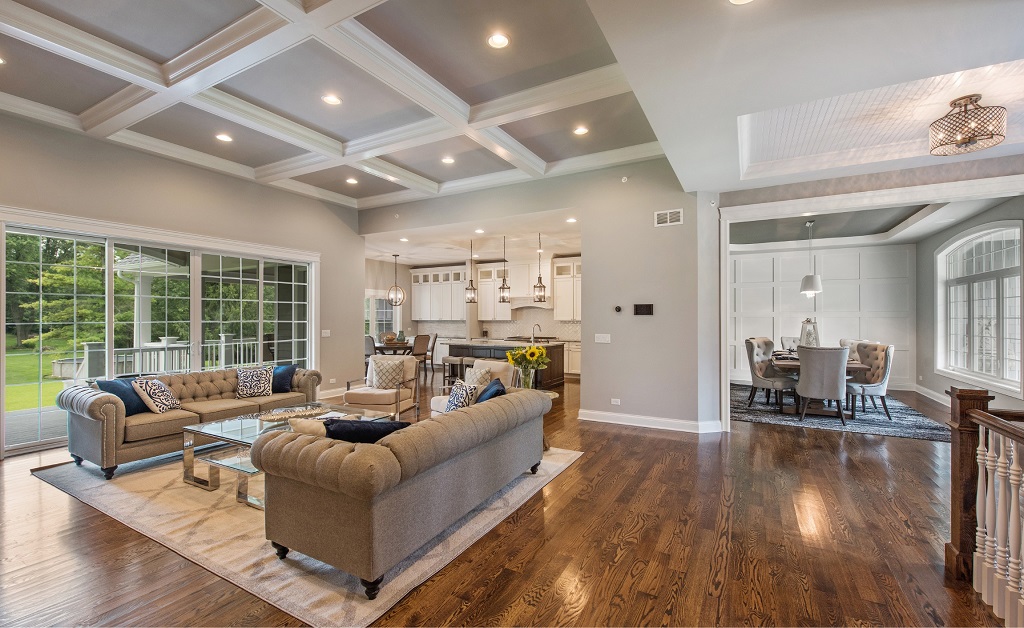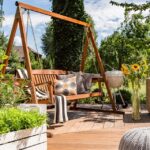Home value is something that is always on the minds of homeowners. Whether you are considering selling your home soon or not, it is still important to consider how to increase the value of your most significant investment.
Though home renovations can be an exciting and rewarding way to add value to your home, they can also be challenging, time-consuming, and expensive. Luckily, there are many cost-effective and simple ways to update the look of your home without overextending your finances.
For example, there’s a less costly and faster option for updating your flooring without demolishing walls or ripping up your floorboards. You can “replace” the look of your old wooden floors with a new coating that looks just as good as the original flooring.
This process is called floor resurfacing or floor lamination, which means you won’t need to go through all the hassle of tearing up your old flooring, or going through a more intensive refinishing process.
If you’re considering undertaking some renovation projects and want to know whether it’s worth spending money on wood floor resurfacing, instead of something more extensive like adding new hardwood flooring, here’s everything you need to know about this affordable renovation option.
Table of Contents
- What is Floor Resurfacing?
- How is Resurfacing Different than Refinishing Hardwood Floors?
- Why You Should Consider Floor Resurfacing Instead of Adding New Floors
- How Floor Resurfacing Can Increase Your Home’s Value
- The Benefits of Floor Resurfacing
- Closing Thoughts: Is Floor Resurfacing Really Worth It?
- Wood Flooring Resources
Also see:
What Is Floor Resurfacing?
Floor resurfacing is the process where a special coating is applied to your existing wood floors to restore the look of your old boards. This process is similar in spirit to refinishing furniture, where the surface is sanded down, the finish is stripped off, and the wood is repainted.
When you resurface your wooden floorboards, you will get a new finish that looks almost identical to the original hardwood floors. The sealant will add a bit of texture similar to the grain of wood, so the floorboards will look like they’re brand new.
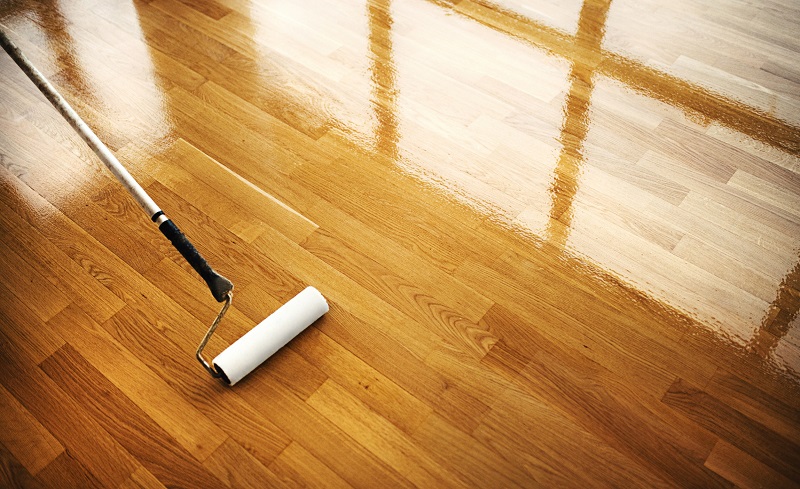
Floor resurfacing can be applied to any floorboard, regardless of the wood species. It works incredibly well on engineered hardwood floors, where the boards have thinner profiles, but have durable pre-stained finishes.
Most hardwood floors can be refinished up to at least three times before they need to be replaced.
How is Resurfacing Different than Refinishing Hardwood Floors?
It is important to clarify that resurfacing and refinishing wood floors are not the same process. Unfortunately, many members of the flooring and construction industries do not always adhere to the same definitions or terminology, which can make understanding the underlying details confusing.
Refinishing involves a more elaborate process than that of resurfacing. Most floor refinishing projects should be done by a reputable and experienced flooring professional. Signs that a wood floor may require extensive refinishing, include:
- Deep Scratches
- Uneven Wear
- Water Damage
- Areas of Faded Stain
- Loose Boards
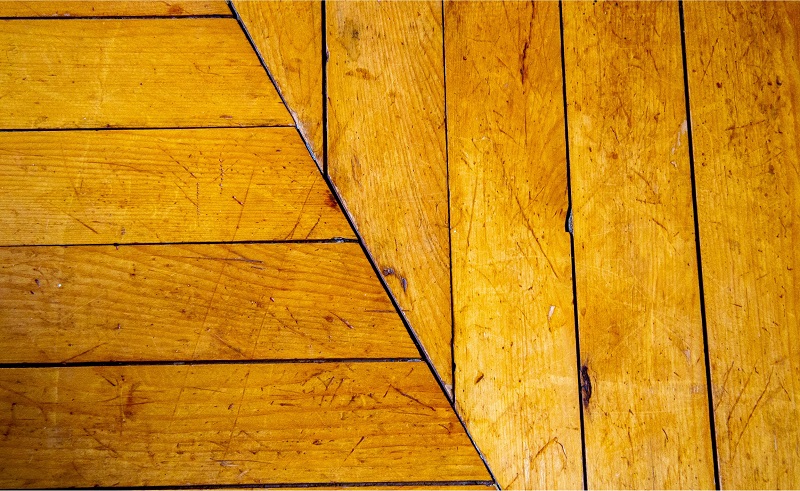
Closeup view of old scratched hardwood that is a better candidate for deep sanding and refinishing.
Refinishing projects for older, historic wood floors that involve partial board replacements or working with exceptionally thin boards are typically referred to as restoration projects.
Resurfacing, on the other hand, focuses on recoating just the top layer of protected coating of the underlying wood flooring that is typically in good condition (e.g. light surface scratches; consistent stain coloring; no significant wear).
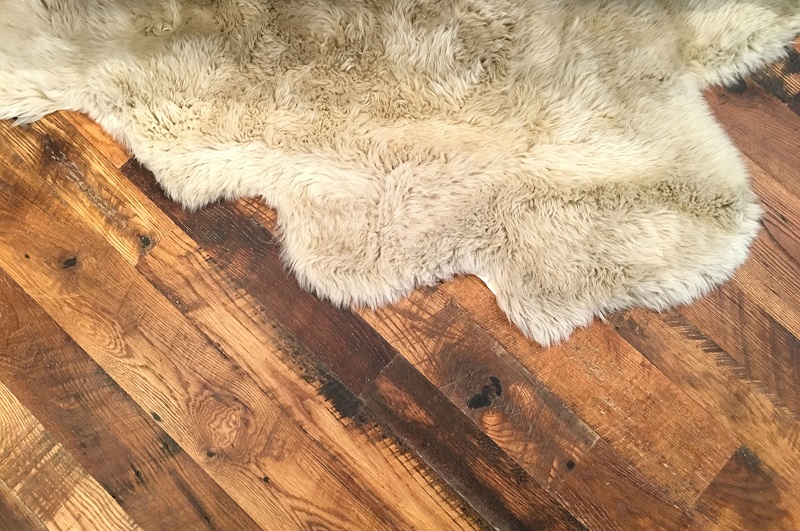
Closeup view of example hardwood flooring that is better suited for resurfacing or “recoating” the top layer finish.
Resurfacing-like services are also referred to as “Recoating”, “Screen & Recoat”, “Buff & Coat”, or “Clean & Recoat”. Important to note is that these processes should all incorporate a thorough cleaning as the first step, using a mild, synthetic pad (not a grinder or sander) to clean the surface of all contaminates and dirt. A thorough cleaning is vital to ensure that proper bonding takes place with the newly added layer of finish on top.
Some wood flooring professionals view “screening” as being too abrasive for resurfacing. However, this more abrasive approach is often used by professionals for its speed, as it bypasses the cleaning process.
In general, resurfacing is also a great option to use on wood flooring that has a factory finish (e.g. engineered wood flooring), as factory finishes tend to be very durable.
Depending on floor area size, a resurfacing project can take just a few hours to a few days, whereas a major refinishing project can take several days to a few weeks. Refinishing jobs also entail significantly more dust and clean up.
For floors that are good candidates for resurfacing, it is also possible to change the color of the existing stain. However, this process of adding additional pigments and coats to darken the color of the existing stain should be left to a professional, as it is imperative to get these coats applied evenly for a pristine professional look.
Why You Should Consider Floor Resurfacing Instead of Adding New Floors
Floorboards can last for decades without needing any major repairs or renovations. Hardwood floorboards are generally easy to maintain and can last a lifetime if properly sealed and maintained.
However, if your floorboards are old and worn out, you may want to consider replacing them with new boards. If you plan to renovate your floorboards, there are a few things to consider before you make a final decision.
Hardwood floorboards are much more expensive than floor resurfacing and take a lot longer to install. However, new hardwood floorboards are more durable and a better investment in resale value.
New hardwood floorboards can add thousands of dollars to the value of your home, whereas floor resurfacing may only add a few hundred dollars. The cost per square foot of floor resurfacing is much lower than adding hardwood floors, so it’s a more affordable option for most homeowners.
Choosing floor resurfacing is a better option when you are facing one or more of the following situations:
- You have significant time and budget constraints
- Your floorboards still have ample thickness, minimal damage, and still have a long expected lifespan due to superior wood quality (i.e. they are worth saving)
- You want to save time and budget to allocate to other renovation projects
- You already like the wood type, positioning, and styling of your wood floors
- You want to retain historic material or aesthetics
Conversely, choosing to replace your flooring with new hardwood floors is a better option when you are facing one or more of the following circumstances:
- Time and budgeting constraints are not a pressing issue
- The existing floorboards are exceptionally thin, of low-quality material, or severely damaged
- You do not care for the current aesthetic of the current wood boards (e.g. length, grain, width, stain, overall layout, etc.)
How Floor Resurfacing Can Increase Your Home’s Value
Floorboards are a crucial part of your home’s interior design and can significantly impact your home’s desirability and resale value.
The first thing potential buyers will notice when they walk into your home is the floorboards, so you want to ensure they look as good as possible. Hardwood floorboards are one of the most popular types of flooring, and in general, can add thousands of dollars to the value of your home.
Real estate agents and potential buyers will be impressed by how new and well-maintained your floors look, giving them confidence that they’re making a sound investment.
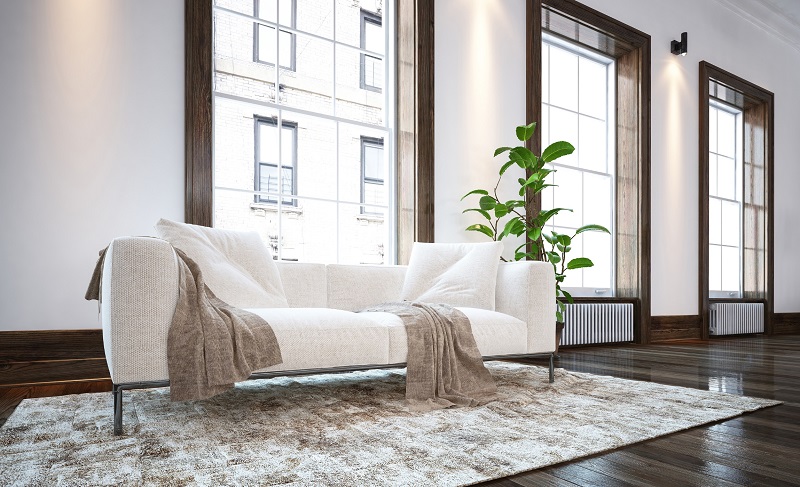
If you’re considering selling your home soon, you can add value to your home more cost-effectively by resurfacing your old floorboards instead of replacing them with new boards. Floor resurfacing works best on hardwood floorboards that look dull or worn out, but are otherwise structurally sound and in good condition.
Resurfacing your old boards will not only make them look new, but it will also conservatively add a few hundred dollars to the value of your home. Unlike hardwood flooring, floor resurfacing is significantly cheaper and faster to install.
By taking the less-time consuming and less-costly approach to resurfacing, you can free up additional project time and budget to pursue other valuable projects.
Resurfacing your floors will also help to protect them from further damage. This is an excellent option if you have hardwood floors starting to show wear and tear, or even tile floors that are cracked or chipped.
Even if you are not planning on selling anytime soon, resurfacing your floors can still be a wise investment, as it will extend the life of your floors and make your home more comfortable and enjoyable.
The Benefits of Floor Resurfacing
- Floor Resurfacing Adds New Life to Old Floors
- Resurfaced Floors are Easier to Maintain
- Floor Resurfacing Is Affordable
- Floor Resurfacing Is Quick & Less Disruptive
- Floor Resurfacing Is Environmentally Friendly
- Floor Resurfacing is a DIY Option
Floor Resurfacing Adds New Life to Old Floors
Resurfacing your old wooden floorboards is the easiest way to give them new life and make them look new again. If your boards are not too worn out or damaged, you can easily clean or remove the top finish and apply a new sealant to them.
In many instances the process only takes a few hours and can be done by two people.
Resurfaced Floors are Easier to Maintain
If you’ve owned hardwood floorboards, you know how much work they can be. You have to clean them regularly and apply sealants to prevent damage. However, if you have floorboards that have been properly resurfaced, the newly added coat will provide invaluable protection, while making the floor easier to clean.

Floor Resurfacing Is Affordable
If you want to renovate the flooring in your home but don’t have the budget for new boards, you should opt for floor resurfacing instead.
Floor resurfacing is significantly cheaper than replacing old floorboards, so it’s a great option if you’re on a budget and still want your floors to look amazing.
Floor Resurfacing Is Quick & Less Disruptive
If you have a tight deadline to finish your renovations, floor resurfacing can be a convenient option in lieu of replacing your floorboards or engaging in a more extensive refinishing project.
It’s a faster and simpler process to clean, prep and apply a new finish to your old boards rather than removing them, installing new panels, and then finishing them. Resurfacing your old boards is much more efficient and less disruptive than renovating your floorboards.
Floor Resurfacing Is Environmentally Friendly
The beauty of old hardwood floorboards can easily become obscured due to years of accumulated dirt and contaminates, without adequate, consistent cleaning. Resurfacing old boards is a great way to upcycle them and make them look new, as the process should start with a thorough cleaning step.
Not only will you be adding value to your home, but you will also be reducing waste by extending the lifespan on your existing floorboards.
Floor Resurfacing is a DIY Option
Unlike adding new wood floors, you don’t always need to hire a professional to resurface your floor. With the right tools, materials, and a little practice, you can do it yourself and save a lot of money. You don’t need a lot of specialized tools to resurface your wooden floorboards. All you typically need is a reputable wood floor cleaner, a buffer or light sander, paint tape, a paint scraper, and a few other basic items that can be found at any hardware store.
If you want your boards to look like new, be sure to buff or lightly sand just the top layer only. You can do this by hand, or by using an electric buffer or sander. The finish should feel smooth to the touch. Once you’ve prepped the boards, you can apply a new finish to them using a paintbrush, roller, lint-free cloth, or lint-free sponge.
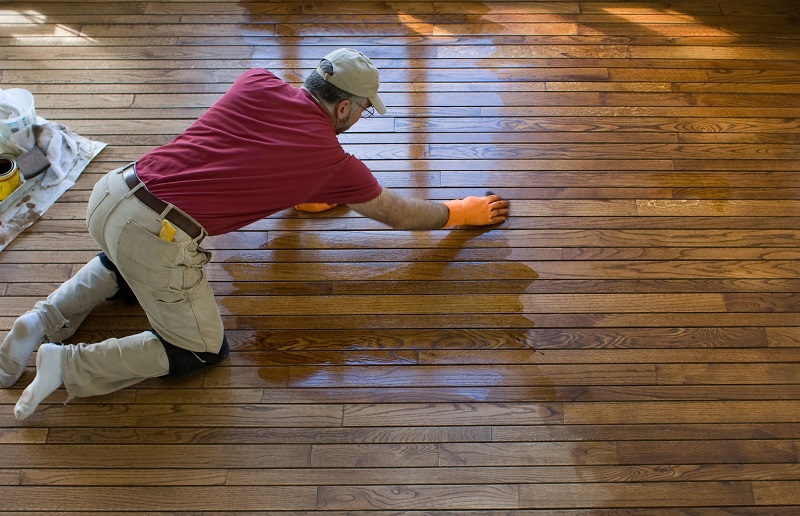
If you prefer not to buff or sand the top layer of your flooring, you can also consider using a store-bought chemical abrasion kit, such as Rustoleum, or a revitalizer, such as Rejuvenate.
Before deciding to go the DIY route, be sure that you know what type of finish you currently have. If you have a wax finish, we strongly recommend contacting a wood flooring professional to assess your options, as polyurethane finishes will not adhere to a wax finish properly. You can test to see if your floors have wax by using a mineral spirits on a less trafficked section of your flooring.
Closing Thoughts: Is Floor Resurfacing Really Worth It?
Hardwood floorboards are beautiful and durable but are also more expensive than other floorboards. If you don’t have the budget to add new boards, you can opt for floor resurfacing instead.
Whether you want to increase your home’s value for a future sale or improve its appearance and durability, resurfacing your floors is a great option. With so many benefits, it’s no wonder that more and more homeowners are choosing this convenient method of refreshing the look of their wood floors.
To learn more about floor resurfacing, also visit the National Wood Flooring Association (NWFA.org), a not-for-profit trade association representing all aspects of the wood flooring industry. The NWFA is dedicated to educating consumers, flooring professionals, and others about the benefits and proper installation and maintenance of wood floors.
Flooring Resources
More Recommended Flooring & Renovation Articles
- The 4 Critical Steps of Waterproofing a Balcony Deck
- Why I Would Never Again Choose Marble Flooring In The Bathroom
- New Technologies to Restore Older & Historic Homes
- A Before vs Virtual vs Real Life Renovation Case Study
- 5 Examples of Older Homes Returning Maximum Profit with Renovations
- Non-Invasive Plumbing Tech to Prevent Ripping Up Your Floors
| Purgula is reader-supported. When you click on links to other sites from our website, we may earn affiliate commissions, at no cost to you. If you find our content to be helpful, this is an easy way for you to support our mission. Thanks! Learn more. |

